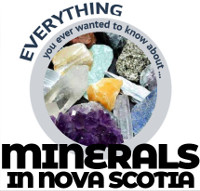- Why Mining Matters
- Jobs
- Safety
- Environment & Operations
- FAQ
- Links
- Fun Stuff
You are here

Gallihar and Dimock
Mr. Death
The Guilty Grenos
James Mitchell
Hugh McAskill
Gold Grows Under Shrubs?
Unexploded Dynamite
Tangier’s John Murphy
Joe Howe Dimock
Chats with Pioneer Miners
Charles Annand
John Scott Williams
Nicholas Fitzgerald
Chief Lonecloud
Pistols and Gold Mines
James MacDonald’s Thefts
John Vaughn
Herbert Dixon and the Halifax Explosion
James Bishop
Neily's Scandals
Waverley in 1934
Discovery of Gold at Dufferin
Hurricane Island
Fletcher and Faribault
Jack Munroe
Mine Apprentice Project
Small Gold Districts
15 Mile Stream
Tributers
E. Percy Brown and the Brookfield Mine
Barachois
Nova Rich Mines
Shad Bay Treasure Hunt
Montague 1937 Accident
Father Lanigan’s “Prospect”
George V. Douglas
The Stewart Brothers
Goldboro
Moose River's Touquoy Mine
Camerons Mountain
Jim Campbells Barren
Stanburne's Puzzling Gold Mine
Pockwock
Beaverbank Lake
Banook Mining Company
Deep Gold Mining
Wellington
Arsenic and Gold
Dynamite
War of Words
King of the Klondike
Oliver Millett
Kempt Gold Mining Company
Carleton
The Memramcook Fiasco
Love and Gold in Oldham
Montague 1893 Disaster
Central Rawdon Consolidated Mines
Cochrane Hill
Amateurish Early Gold Mining
Sable Island Gold
The Sea Wolf
Trueman Hirschfield
Alexander Heatherington
Prospector Joe Cope
Killag Quicksand
George W. Stuart
Wellington
Billy Bell
Cooper Jim Mine
South Branch Stewiacke
Walter Prest
Lake Charlotte
Acadia Powder Mills Company
The Ovens Anticline
Moose River Anticline
Avon Mine Explosion
Montague
Waverley Claims Dispute
Avon River
Moose River Disaster
Mooseland Scam
New York and Nova Scotia Gold Mining Company
Rosario Siroy and the South Uniacke Gold District
Blockhouse
Killag Gold District
Miller Lake
Baron Franz von Ellershausen
Mooseland: Nova Scotia’s first Gold Discovery
United Goldfields of Nova Scotia
Pleasant River Barrens Gold District
Lochaber Gold Mining Company
Rawdon Gold Mines
MacLean Brook
Gold in Clayton Park?!
Forest Hill
Meguma vs. Placer Gold
Uniacke
Voglers Cove
Gold River
Moosehead
Goldenville
Westfield
Indian Path
Harrigan Cove
Centre Rawdon
Nova Scotia’s Gold Mining History
WWII Gold
Middle River Gold District
Early Gold Discoveries
Halifax 1867
Paris Exhibition 1867
Mining and Tourism
An Act relating to the Gold Fields
Molega Gold District
Brookfield Gold District
Gays River
Halifax Gold
Caribou Gold District
Renfrew Gold District
Oldham Gold District
Whiteburn Gold District
Country Harbour Mines
Waverley Gold District
Robert Henderson and Klondike Gold
George Mercer Dawson
Cow Bay Gold District
Lake Catcha Gold District
Wine Harbour Gold District
Gold Grows Under Shrubs?
Some of Nova Scotia’s early gold miners apparently thought gold grew under shrubs!
J. P. Messervey, inspector at Nova Scotia’s Department of Mines, gave a speech to the Kiwanis Club in 1929. He said, according to the April 9 edition of the Evening Mail, that when gold was first discovered in Nova Scotia in 1858, “it was thought to grow under a certain kind of shrub, this shrub being nearly exterminated at the time by miners seeking the precious metal at its roots.”
We could find no additional details or confirmation of this in any other record, so it is likely that Messervey was exaggerating. However, it also seems unlikely that a scientist and senior government official like Messervey – he later served as deputy minister of the Department of Mines for many years – would just fabricate this story. So, perhaps at least a small number of early gold miners believed this curious explanation for how gold deposits form.
Many of the province’s first gold miners had no actual expertise in mining or geology. They were often farmers, tradesmen and men drawn from any number of other professions because the only skill required was the ability to swing a hammer to smash rock. In the 1860s, perhaps it did not seem far fetched to some of them that gold grew under a particular shrub, especially if someone had coincidentally found gold under one of those plants.
Modern gold mining is a sophisticated, science-based activity that takes excellent care of the environment. It creates high-paying jobs and provides a material we all use every day. For example, it is in all electronics, so it is in the device you are reading this on.
Modern gold mines can often fix environmental mistakes made by the unsophisticated miners of past generations by, for example, remediating historical tailings. The modern Moose River gold mine remediated two historical mine sites and 61,000 tonnes of contaminated soil from historical operations by digging them up and moving them into the modern mine’s tailings facility, where they can no longer interact with the environment.
To set the record straight, here is how most of Nova Scotia’s gold deposits formed:
All gold on Earth formed billions of years ago in stars that over-heated and blew up. Gold formed in the heat of the explosions and then floated around space. As rock, dust and other materials came together to form Earth, gold was distributed around the planet.
Most of Nova Scotia’s gold deposits started forming 400 million years ago when North Africa and North America started colliding. Layers of horizontal sedimentary rock were crumpled into anticlines (domes) and synclines (troughs) - a series of rock waves.
Fluid leached gold from rock deep underground and flowed into cracks in rock closer to surface, forming veins of gold-bearing quartz as the fluid eventually cooled and hardened. Anticline domes trapped the melted, gold-bearing rock as it rose from deep in earth's crust.
Gold is everywhere but to mine it, we need a geological anomaly like a tectonic plate collision to form a deposit - to concentrate the gold so a mine is economically viable.

















































































